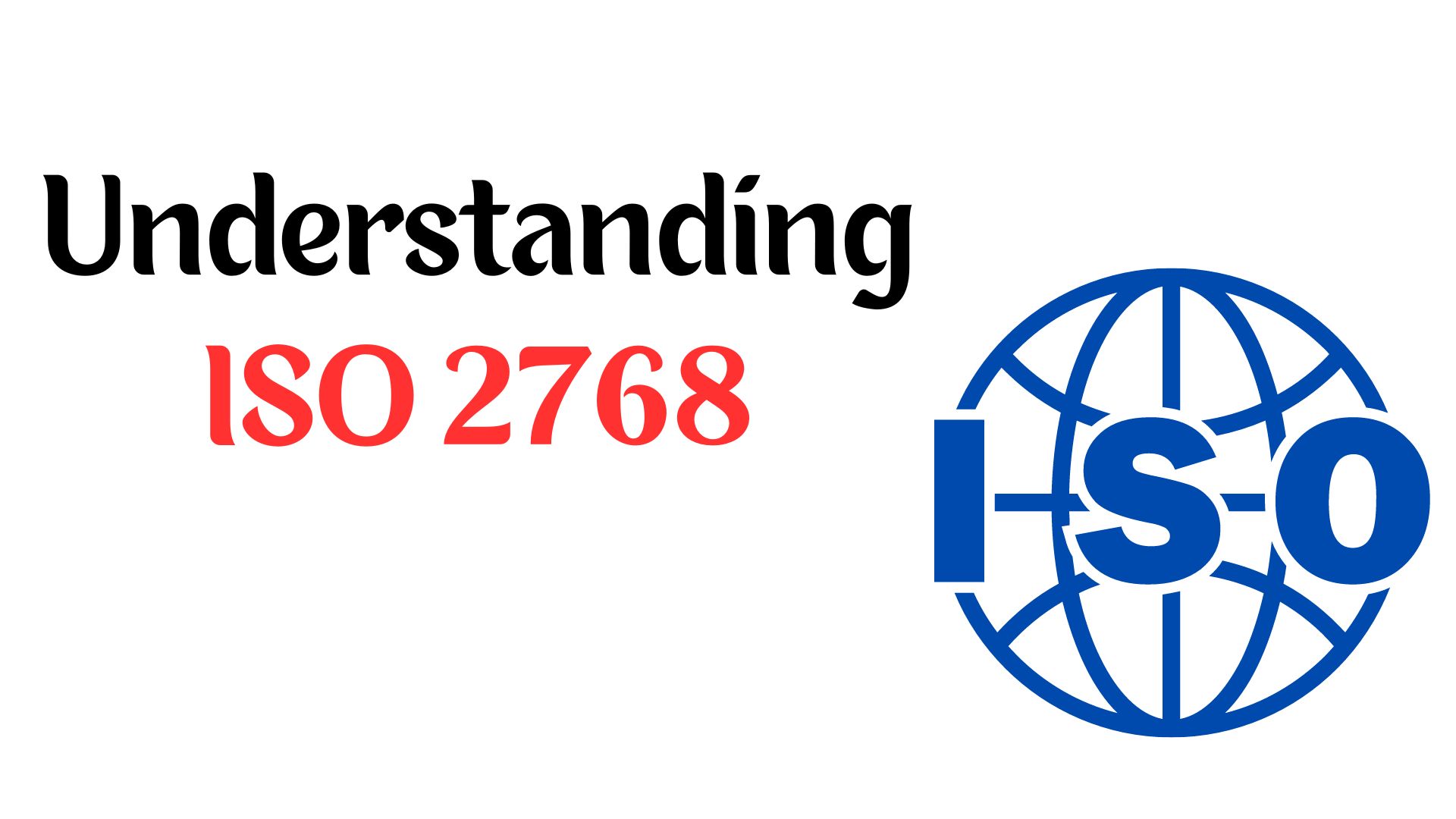Understanding
ISO 2768:
In the intricate world of manufacturing, precision is
paramount. Ensuring that components fit together correctly and function as
intended often hinges on minute details. Tolerances—the permissible limits of
variation in a physical dimension—play a crucial role in this. ISO 2768, an
international standard, provides a systematic approach to general tolerances,
offering a clear framework to ensure consistency and quality in manufacturing
processes.
What is ISO 2768?
ISO 2768 is a standard established by the International
Organization for Standardization (ISO) that specifies general tolerances for
linear dimensions, angular dimensions, and geometrical tolerances in engineering
drawings. This standard is particularly useful for simplifying the
communication of tolerance specifications in drawings and documents, reducing
the need for detailed tolerance indications unless special precision is
required.
ISO 2768 is
divided into two parts:
- ISO 2768-1: General tolerances for linear and angular
dimensions without individual tolerance indications.
- ISO 2768-2: Geometrical tolerances for features without
individual tolerance indications.
Why is ISO 2768 Important?
The implementation of ISO 2768 brings several key benefits to
manufacturing and engineering processes:
1. Consistency: It provides a consistent approach to
specifying tolerances, which is critical in a globalized industry where
components may be manufactured in different parts of the world and assembled
elsewhere.
2. Efficiency: By standardizing tolerance specifications, ISO
2768 reduces the need for detailed, individual tolerance notations on every
drawing, saving time and reducing the potential for errors.
3. Quality Assurance: Ensuring that parts are within
specified tolerances helps maintain quality and functionality, reducing the
risk of part failures and the costs associated with rework or defects.
Key Elements of ISO 2768
1. General Tolerances for Linear and Angular Dimensions (ISO
2768-1)
ISO 2768-1 categorizes tolerances into four classes—f (fine),
m (medium), c (coarse), and v (very coarse). These classes provide different
tolerance ranges depending on the nominal size of the dimension.
- Fine (f): Used for high-precision requirements, often in
critical components.
- Medium (m): The most commonly used class for general
applications.
- Coarse (c): Suitable for less critical parts where broader
tolerances are acceptable.
- Very Coarse (v): Rarely used, applied where large tolerances
are permissible.
For example, for a nominal size range of up to 10 mm, the
fine tolerance (f) might be ±0.1 mm, while the very coarse tolerance (v) could
be ±0.5 mm.
2. General
Tolerances for Geometrical Tolerances (ISO 2768-2)
ISO 2768-2 deals with geometrical tolerances, covering
aspects such as straightness, flatness, perpendicularity, symmetry, and
run-out. Like linear and angular dimensions, geometrical tolerances are also
categorized into different classes—H (high), K (medium), and L (low).
For instance, straightness tolerance for a feature with a
nominal length up to 100 mm might be 0.1 mm for class H, whereas it could be
0.2 mm for class L.
Practical Application of ISO 2768
1.
Simplification of Drawings
One of the primary benefits of ISO 2768 is the simplification
it brings to technical drawings. Instead of specifying tolerances for each
dimension individually, engineers can indicate the tolerance class (e.g., ISO
2768-m) on the drawing. This notation immediately informs the manufacturer of
the general tolerances applicable to all dimensions on the drawing unless
otherwise specified.
2. Reducing
Miscommunication
In international projects, differences in measurement systems
and tolerance practices can lead to misunderstandings. ISO 2768 serves as a
common language, reducing the risk of miscommunication between design and
manufacturing teams, whether they are located in the same country or across
continents.
3.
Balancing Cost and Precision
By providing different tolerance classes, ISO 2768 allows for
a balanced approach to manufacturing costs and precision requirements. High
precision often comes with increased production costs. By using the appropriate
tolerance class, manufacturers can ensure that they are not over-engineering
parts, thereby controlling costs without compromising on functionality.
Challenges and Considerations
While ISO
2768 offers many advantages, there are challenges and considerations to be
mindful of:
Understanding the Standard: Proper application of ISO 2768
requires a good
Understanding of the standard and its implications. Incorrect
application can lead to parts that do not fit or function as intended.
Industry-Specific Requirements: Certain industries may have
specific tolerance requirements that go beyond what ISO 2768 provides. In such
cases, additional specifications and standards may be necessary.
Inspection and Quality Control: Implementing ISO 2768
necessitates precise inspection and quality control processes to ensure that
parts meet the specified tolerances. This can require investment in measurement
tools and training.
Conclusion
ISO 2768 plays a pivotal role in the manufacturing and
engineering sectors by providing a standardized approach to general tolerances.
It enhances consistency, efficiency, and quality across global supply chains.
By understanding and correctly applying ISO 2768, manufacturers can streamline
their processes, reduce costs, and maintain high standards of product quality.
As industries continue to evolve and the demand for precision increases, the
relevance and importance of ISO 2768 will only grow, underscoring its value as
a cornerstone of modern manufacturing practices.

